#Cecilia Zárate
Explore tagged Tumblr posts
Text
Opinión | Segunda Vuelta – Luis Muñoz | Firman convenio para vivienda asequible
Opinión | Segunda Vuelta – Luis Muñoz | Firman convenio para vivienda asequible #SociedadNoticias #SegundaVuelta @Claudiashein @GobiernoMX @ClaraBrugadaM @Congreso_CdMex @yuriri_ayala @XochitlBravoE
Meta del GCDMX: construir más de 200 mil casas. Mecanismos para acabar con deudas impagables Alcaldías con mas rezago, Iztapalapa, GAM y AO. Por Luis Muñoz Aunque la Ciudad de México requiere de un aproximado anual de 448 mil 770 nuevas casas para atender el déficit de vivienda, con la firma de un convenio de colaboración el Gobierno capitalino espera alcanzar la meta de construir más de 200…
#Alberto Martínez Urincho#AMRACI#Ana Laura Nolasco#Andrés Sanchez#Antiguo Palacio del Ayuntamiento#Bancada de la Transformación#Cdmx#Cecilia Vadillo#Clara Brugada#Clara Brugada Molina#Claudia#Claudia Sheinbaum Pardo#Columna#Congreso capitalino#Corina Machado#Donald Trump#Edmundo Gonzalez#Estado mexicano#Fabricio Ledesma Heinrich#Fernando Zárate Salgado#Gerardo Fernández Noroña#Hugo Chávez#IECM#Instituto Electoral de la Ciudad de México (IECM)#Jefa de Gobierno de la Ciudad de México#Ledesma Heirinch#Licencia permanente#Luis Alberto Chávez García#Luis Muñoz#Maduro
0 notes
Text
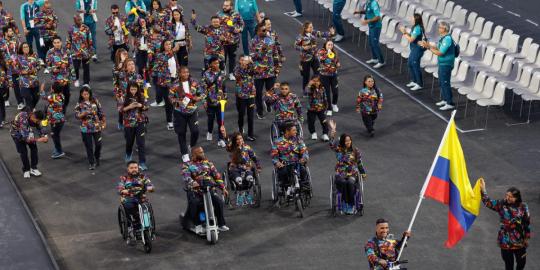
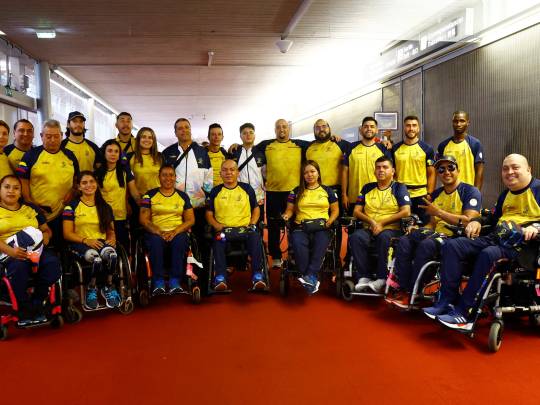

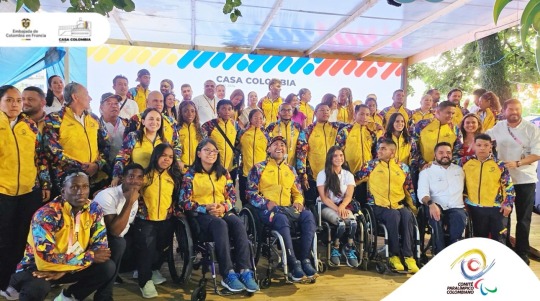
A bit late but couldn't forget about them, our Paralympics delegation. They absolutely killed it. Every single one of them giving it all and making us proud.
Thank you to all of our 78 participants, 28 medalists, and 44 diplomas.
Alex Enrique Martínez Guevara, Ana Lucía Pinto Ochoa, Andrés Felipe Mosquera Neira, Angie Lizeth Pabón Mamian, Aura Cristina Poblador Granados, Bertha Cecilia Fernández Arango, Brayan Mauricio Triana Herrera, Buinder Brainer Bermúdez Villar, Carlos Andrés Vargas Villanueva, Carlos Daniel Serrano Zárate, Daniel Giraldo Correa, Daniela Carolina Munévar Flórez, Darian Faisury Jiménez Sánchez, David Felipe Rendón Acosta, Diego Fernando Meneses Medina, Edilson Chica Chica, Edwin Fabián Matiz Ruiz, Eglain Antonio Mena Lemus, Erica María Castaño Salazar, Euclides Grisales Diaz, Fabio Torres Silva, Francy Esther Osorio Calderón, Fredy Duvian López Morales, Gabriela Oviedo Rueda, Giovanny Andrés Malambo Rachez, Gisell Natalia Prada Pachón, Héctor Julio Ramírez Murcia, Ionis Dayana salcedo rodríguez, Jesús Alberto López, Jesús Augusto Romero Montoya, Jhohan Darío Ardila Cárdenas, Jhon Alexander Hernández García, Jhon Eider González Hernández, Jhon Fredy Gómez Giraldo, Jhon Sebastián Obando Asprilla, José Gregorio Lemos Rivas, Juan Alejandro Campas Sánchez, Juan David Pérez Quintero, Juan Esteban García Sánchez, Juan Esteban Patiño Giraldo, Juan José Betancourt Quiroga, Julián Andrés Jaramillo Téllez, Karen Tatiana Palomeque Moreno, Kevin Alfonso Moreno Gualaco, Laura Carolina González Rodríguez, Leider Albeiro Lemus Rojas, Leidy Johanna Chica Chica, Lino Nicolás Coca Castro, Luis dahir Arizala Ocoró, Luis Fernando Lara Rodallega, Luis Fernando Lucumí Villegas, Luis Francisco Sanclemente, María Alejandra Murillo Benítez, María Angélica Bernal Villalobos, María Mónica Daza Guzmán, María Paula Barrera Zapata, María Salomé Henao Sánchez, María Teresa Restrepo Rojas, Mariana Guerrero Martínez, Mauricio Andrés Valencia Campo, Mayerli Buitrago Ariza, Miguel Ángel Rincón Narváez, Nelson Crispín Corzo, Niver Rangel palmera, Paula Andrea Ossa Veloza, Reynel Romero Montoya, Santiago Solis Torres, Sara del Pilar Vargas Blanco, William Jair higuera Ocampo, Xiomara Saldarriaga Hernández, Yamil David Acosta Manjarrez, Yasiris Blandón Escobar, Yeferson Suárez Cardona, Yeniffer Paredes Muriel, Yesenia María Restrepo Muñoz, Yesica Paola Muñoz Nieto, Zharith Alejandra Rodríguez Silva, Zuleiny Rodríguez Trujillo
#paralympics 2024#colombia#comité paralímpico colombiano#colombian paralympic committee#(nightmade)#this was my first time actually watching the paralympics games#it was amazing#I'm saddened that they don't get as much noise as the other games#like we won 9 times more medals and yet the news nothing
3 notes
·
View notes
Text
Vuelve el ciclo gratuito “Música al mediodía” al Teatro Coliseo Podestá
#LaPlata: Vuelve el ciclo gratuito “Música al mediodía” al Teatro Coliseo Podestá
En el marco de los distintos espectáculos gratuitos que ofrece el Teatro Coliseo Podestá, la Municipalidad de La Plata lanza, desde este domingo, la nueva temporada del ciclo “Música al mediodía”, que se desarrollará el primer y el tercer domingo de cada mes, desde las 11:30 horas, en la Sala “China Zorrilla”.
En ese sentido, la propuesta que comenzará el próximo domingo 15 de abril, tiene como…
View On WordPress
#Alejandra Claus#barroca#Cecilia Zárate#contemporánea#Esteban Manzano#folklore#Franco Ariel Piacenza#Gabriela Massun Sovic#jazz#Karina Álvarez#Leticia Zucherino#Luis Carcachab#Marcelo Dutto#Miguel Martiarena#música académica#Música al Mediodía#Patricia Casella#sala “China Zorrilla”#Selene Lara#Sergio Casanovas#siglo XVII#tango#Teatro Coliseo Podestá
0 notes
Link
En el Foro Nacional del Litio reconocen al senador Alejandro Armenta como pionero de la reforma para lograr la rectoría nacional del Litio La senadora Cecilia Sánchez García reunió a académicos para retomar la importancia que tiene este mineral energético en el desarrollo del país Con-textos Regionales.- Senado dela República / Maritza Zárate / Durante...
0 notes
Link
1 note
·
View note
Photo

Se busca a allegados de bebé cuya familia murió en un choque Se trata de Oliver Toro Chacón, de 1 año. Sus papás,Raúl Eduardo Toro, Mileidys Mariana Chacón Sánchez y Cecilia Sánchez de Chacón y abuela, de origen venezolanos, fallecieron el pasado lunes en un accidente entre una moto, una camioneta y un micro sobre la Ruta 9. El niño se encuentra internado en el Hospital de Zárate. La familia tiene domicilio en la localidad de Tortuguitas, partido de Malvinas Argentinas. Para atención de este tema está dispuesto el teléfono 03487 42-2300, atendido por una asistente social. 09/03/2021 https://www.instagram.com/p/CMSEb5lDML4/?igshid=1mmt1kbhndyz3
0 notes
Text
Qué es de la vida del "Pulga" Ríos, el ex Belgrano que está feliz en el interior provincial
Andrés Ríos era de esos delanteros encaradores. Predispuesto al pique al vacío, listo para sorprender. Por las bandas, iba a la velocidad de la luz de frente hacia los defensores. Y, justo antes del choque, sacaba una gambeta relampagueante que dejaba deprimidos a los rivales.
Con esas virtudes se hizo fama (desde chico) en el fútbol cordobés. Y así hizo su camino: a los 8 años llegó a Belgrano. Porque a su carrera (siempre) le metió el alma. Es que, lo dice él mismo, mantuvo el espíritu del nene de barrio 1° de Mayo que anhelaba jugar en la Primera del club que era hincha.
Y se le dio. Las vivió a todas en Belgrano. Todas las que se pueden vivir en una vida celeste. Ascenso, descenso. Amigos. Buenos momentos. Malos. Debut, despedidas. Regreso.
El “Pulga” se retiró del fútbol profesional siendo joven. Muy. A los 27. Las lesiones en la rodilla derecha le quitaron pimienta a esas gambeta endiablada y potencia furiosa para atacar.
Hoy, con 37 años, sigue en el fútbol. Pero amateur. Juega y tiene experiencia siendo entrenador. Vive en Río Tercero y, desde allá, atiende por teléfono a Mundo D para esta nueva entrega de la sección Qué es de la vida de.
“Me siento un pibe de la vida, ja, pero no para el fútbol, ja, ja”, suelta con buena onda. ¿Si soy feliz? Seguro que sí, no me puedo quejar”, expresa Andrés Ríos.
“Vivo a tres kilómetros del centro de Río Tercero, para ir a la ciudad tengo que cruzar el río. Es otra vida a la que tuve en la ciudad de Córdoba. Desde la seguridad hasta al ritmo de cada día”, relata de su presente.
Ríos vive con Julieta, su pareja. Y también con Juana, su hija de cuatro años. Lamenta no poder ver más seguido a Emilio, su hijo de 14, que está en Córdoba y que, por las restricciones de traslados que hay por la pandemia, no puede estar con él con la frecuencia que el vínculo y el afecto merecen.
“Estaba a punto de empezar a jugar en un club de Villa General Belgrano, por la liga local, y pasó esto del coronavirus y se frenó todo. Así que acá estamos, esperando, pero bien, con salud. Extrañando a mi otra parte de la familia que está en Córdoba”, se sincera.
Los “otros” Ríos son muchos. El “Pulga” es el más chico. Mamá Zulema y papá Daniel armaron inmensa familia con los hermanos de Andrés, que siguen en contacto con él por videollamadas: Dora, José y Roberto, Susana, Sandra, Alejandra, Roxana y Cecilia.
–¿Son todos de Belgrano?
–Podés creer que no, ja, ja. Mis dos hermanos varones son de Talleres, ja, ja. Hasta me deben haber puteado alguna vez en la cancha, ja, ja. Nooo, en serio, mi familia siempre me ha apoyado. Yo les estoy muy agradecido.
Andrés ya trabajó como entrenador en las inferiores de Las Palmas, de 9 de Julio de Río Tercero, también en Reserva y hasta de la primera del club Fitz Simon de Embalse. “Es una linda experiencia dirigir, poder transmitir lo que aprendí de mis años en clubes de AFA y en México”, abre su corazón.
Ríos debutó en Belgrano el 14 de junio de 2003, en el Gigante de Alberdi, ante Huracán de Tres Arroyos. Belgrano estaba en la B Nacional y los técnicos eran Jorge Guyón, Luis Ernesto Sosa y Cosme Julián Zaccanti.
“Yo estaba en la primera local de Belgrano en 2002 y me dieron a préstamo a Universitario para jugar un regional. Y anduve bien, me hizo madurar jugar en ese club al que le estoy muy agradecido. Y en aquel Belgrano había muchos jugadores y los chicos de la local hacíamos la práctica de fútbol contra el equipo de primera. Y un día me pusieron unos minutos del segundo tiempo de la práctica para el lado de los titulares. No puedo explicar la alegría…”, arranca el monólogo de Ríos, que detalla con entusiasmo.
“Y ese día del partido estaba mi familia en la tribuna, yo estaba en el banco y esperaba entrar. Y entré. Por el ‘Luifa’ Artime, que era un ídolo. Yo iba a la cancha como hincha en los ’90 y gritaba sus goles. Y ahora me tocó entrar por él. Fue hermoso. Y del partido me acuerdo que fue de película para mí, poder jugar en el club del que soy hincha. Me solté y me fue bien. Son imágenes que te quedan para siempre. Y también recuerdo el apoyo de la hinchada de Belgrano, que es muy especial”.
No se le ve la cara al “Pulga” mientras cuenta lo del párrafo anterior, pero no hay que ser Freud para darse cuenta que ese “viaje al pasado” le mueve el corazón.
Su primer gol se dio en la temporada siguiente, cuando ya era parte del staff permanente de la delantera de Belgrano. Fue ante San Martín de Mendoza, también en Alberdi, bajo la dirección del DT Omar Labruna. Ríos era una fija.
También estuvo en el plantel que logró el ascenso de 2006, con Carlos Ramacciotti como DT. Era el delantero que jugaba con Matías Gigli o con Mariano Campodónico.
Igualmente, su momento top fue… “En Primera, con Belgrano y en 2007. Fue cuando mejor jugué. Me salían todas, ja. Lamentablemente nos fuimos al descenso y eso opacó el buen nivel de varios chicos del club que compartimos ese proceso”.
Como la rompió, fue transferido a Veracruz de México. “Y, cuando mejor estaba, sufrí la primera de varias lesiones en la rodilla y eso me puso un freno. Fue difícil de asumirlo, pero uno lo va superando”.
Después de su paso por el fútbol mejicano, regresó a Argentina para estar en Colón. Y hasta volvió a Belgrano de manera efímera. Formó parte del plantel que inició la campaña del épico ascenso ante River, en la temporada 2010-2011.
“Yo estuve hasta febrero de ese año y después estuve tres años parado hasta que la ‘Tota’ Hernán Medina me invitó a jugar en 9 de Julio de Río Tercero y ahí volví”, recuerda con alegría antes de prenderse en las preguntas-respuestas de Mundo D.
–Sos uno de “los chicos de Córdoba” que llegó a la Primera de un club de Córdoba. Suele decirse que eso no es nada fácil. ¿Qué pensás?
–Puedo hablar de lo que me tocó vivir. En 2002, en Belgrano había una urgencia muy grande para ascender y por ahí venían muchos jugadores, a veces de descarte. Después eso cambió y Belgrano dejó de ser informal en muchos aspectos para ser el gran club que es hoy. Y apostó a las Inferiores y a las condiciones para esas Inferiores. Y el cambio se vio. Sobre mi caso, yo digo que tuve la oportunidad y la aproveché. Creo que hoy los chicos están muy preparados, más que antes. Y un club como Belgrano tampoco ya no trae jugadores por que sí. Belgrano es una gran vidriera.
–¿Qué ves de Belgrano hoy?
–Que es un gran club. Ha crecido mucho en los últimos 15 años. Es otro club. Los que hemos visto lo que era y vemos lo que es… hay una gran diferencia. Tiene un predio espectacular, tiene un estadio renovado. Y la cuestión política de hoy es el tema porque tiene a dos personas muy reconocidas tratando de ser presidentes (por Luis Fabián Artime y Armando Pérez). La gente no debe olvidarse que Belgrano tiene que seguir progresando.
–¿Compañeros que te hayan marcado en tu vida futbolística?
–Te voy a nombrar a varios. Una de las primeras veces que me tocó concentrar lo hice con José Luis Villarreal. “Villa”, con toda su experiencia, me dio consejos espectaculares. También voy a mencionar a Hernán Medina y a Adrián Ávalos, dos jugadores que ayudaban a la vida en el grupo. Y me marcó un compañero que tuve durante sólo seis meses y que quizá el hincha de Belgrano no se acuerda mucho. Es Germán Noce. Le decíamos el ‘viejo’ Noce. Gran persona. También me acuerdo de Darío Zárate, Jorge Priotti, “Chiche” Sosa y Raúl Sanzotti. Todos han sido muy buenas personas. Y tuve suerte de compartir muchos años juntos con un grupo de jugadores que llegamos todos a Primera: Gastón Turus, Franco Peppino, Ezequiel Arriola, Mario Bolatti, Matías Porcari, Ernesto Maceiro, Marcelo Iglesias, Germán Montoya. Todos somos hinchas, todos estamos muy unidos hasta hoy. Todos cumplimos el sueño de jugar en Belgrano.
–¿Qué hay en el fútbol del interior cordobés? ¿Qué proyección tiene?
–Yo puedo hablar de la Liga de Río Tercero porque hace cinco años que estoy acá. Los clubes del interior tienen mucho sentido de pertenencia. Los chicos son del club y son hinchas del club. Sueñan con jugar en Primera en su club. Muchos no quieren irse a Córdoba o a Rosario. Obvio que hay condiciones económicas diferentes en los clubes. No muchos tienen la chance de dar un salto al fútbol de AFA. Pero acá las ligas son competitivas, se juega con un gran marco, pero seguro que hace falta aspirar a algo más. Y trato de decírselo a los chicos que me ha tocado entrenar.
–¿Qué dice Andrés Ríos del “Pulga” Ríos?
–Uhhh… a ver… un chico de un barrio humilde, de 1° de mayo, que cumplió el sueño de su vida: jugar en Belgrano.
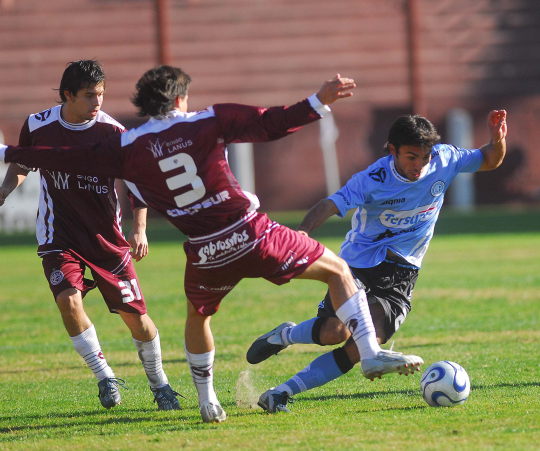
rios_belgrano_6_1597246997.jpg
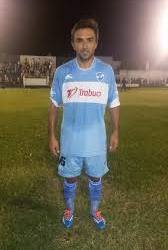
whatsapp_image_2020-08-12_at_11.38.56_1597246974.jpeg
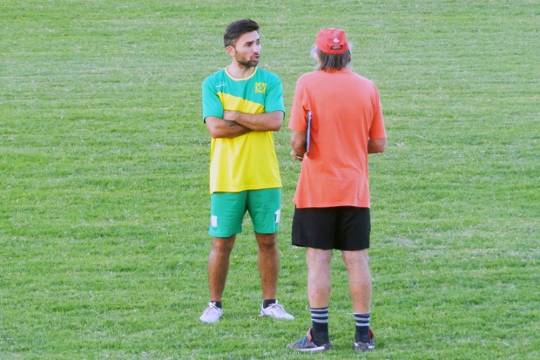
whatsapp_image_2020-08-12_at_11.38.56_1_1597246974.jpeg
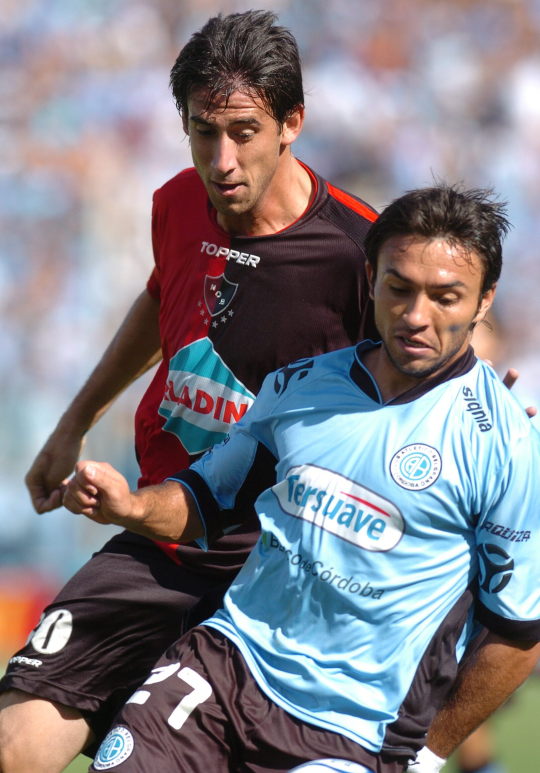
rios_belgrano_8_1597246997.jpg
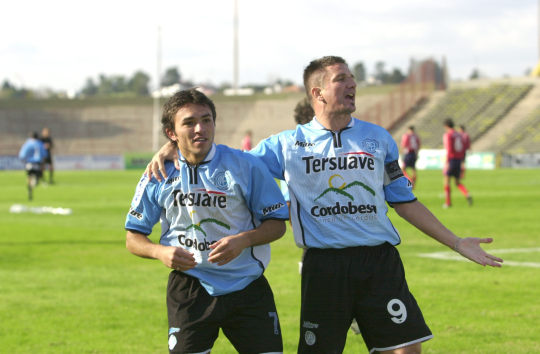
rios_belgrano_14_1597246997.jpg
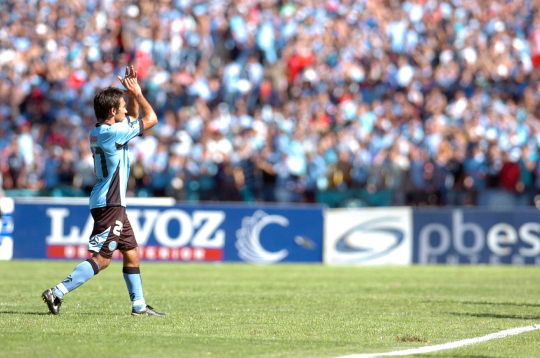
rios_belgrano_10_1597246997.jpg

rios_belgrano_13_1597246997.jpg
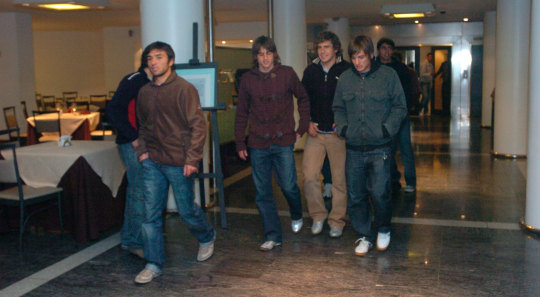
rios-belgrano-5_1597246819.jpg

rios-belgrano-9_1597246819.jpg

rios-belgrano-5_1597246819.jpg
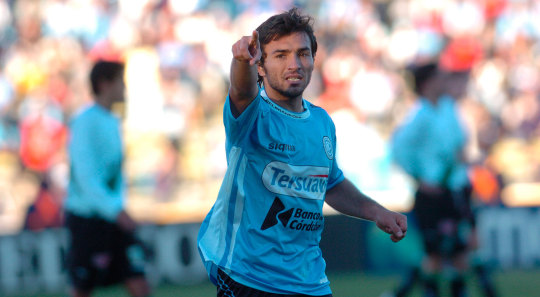
rios-belgrano-4_1597246819.jpg
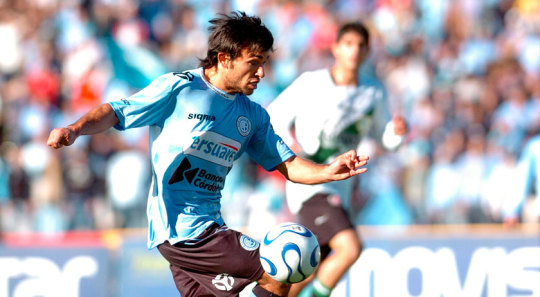
rios-belgrano-3_1597246819.jpg

whatsapp_image_2020-08-12_at_11.38.56_1_1597246974.jpeg

whatsapp_image_2020-08-12_at_11.38.56_1597246974.jpeg
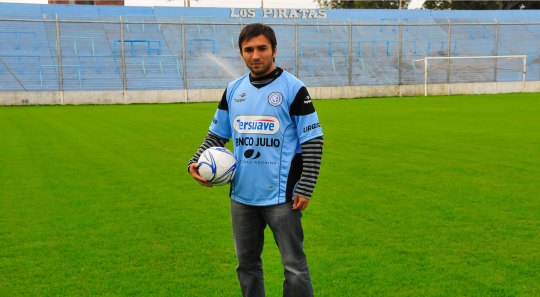
rios-belgrano-1_1597246997.jpg

rios_belgrano_6_1597246997.jpg
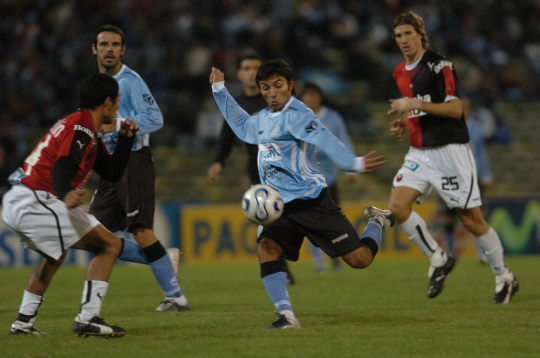
rios_belgrano_7_1597246997.jpg

rios_belgrano_8_1597246997.jpg

rios_belgrano_10_1597246997.jpg
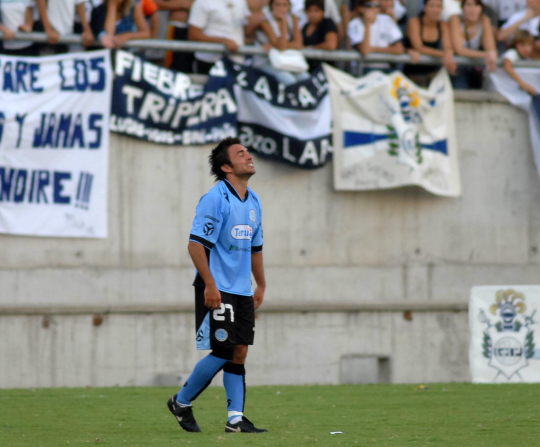
rios_belgrano_11_1597246997.jpg

rios_belgrano_12_1597246997.jpg

rios_belgrano_13_1597246997.jpg

rios_belgrano_14_1597246997.jpg
source https://mundod.lavoz.com.ar/futbol/que-es-de-la-vida-del-pulga-rios-el-ex-belgrano-que-esta-feliz-en-el-interior-provincial
0 notes
Photo

Invita DIF a cordobeses a participar en Semana de la Salud en línea Córdoba, Ver.,- Con la finalidad de apoyar a cada sector de nuestra población cordobesa y brindarle la asesoría en relación a distintos temas de salud por el confinamiento del COVID-19, el Sistema Municipal para el Desarrollo Integral de la Familia (SMDIF) que preside Isaac Luz López, invita a toda la población a estar pendientes de nuestra “Semana de la Salud” en línea. Esta semana será transmitida a través de nuestra página de Facebook DIF Córdoba del 25 al 29 de mayo a partir de las 5:00 de la tarde, de lunes a viernes se estarán abordando diversos temas relacionados a la violencia, cuidado de la vista y salud mental. Janet Zárate Monluí, directora del Sistema Municipal, informó que este tipo de acciones tiene como objetivo apoyar a nuestra población al cuidado de su persona, principalmente en este periodo en el que tenemos que estar en casa y muchas veces presentamos problemas que no sabemos cómo enfrentarlos y donde recibir la ayuda. Durante estos días contaremos con la participación de expertos como la psicóloga, Cecilia Guerrero Hernández y Sara Gabriela Palacios Hernández, directora del Instituto Cordobés de las Mujeres por la Igualdad con el tema: ¿Qué es la violencia?, los tipos y como identificar si soy agredida y “¿Cómo saber si estoy sufriendo violencia psicológica?”. Además participará el especialista en oftalmología, Víctor Manuel Hernández, con “Medidas de prevención para la salud visual en tiempos de COVID-19” y el psiquiatra, Ernesto Carrillo con el tema: “Impacto de la salud mental en tiempos de COVID-19”. Para finalizar cerraremos este ciclo con la directora del ICMI y la asesora jurídico del Centro de Atención a Víctimas de Violencia Familiar (CAIVF) con el tema “¿Qué tengo que hacer si sufro violencia?”, si quieren conocer más se les invita a entrar a nuestra página, todas sus dudas también podrán ser recibidas a través de este medio. Porque ¡En Familia todo es Posible! https://www.instagram.com/p/CAeDfF-Bfwr/?igshid=1nnc3fmfyjcg3
0 notes
Link
Así lo dijo a Excélsior Francisco Albarrán, secretario general de Sindicato Nacional Independiente de Trabajadores del INBAL (SINITINBAL), quien aseguró que los trabajadores también pidieron la destitución de Cecilia Zárate, coordinadora del museo, ubicado en el tercer piso del Palacio de Bellas Artes, «ante la corrupción y la falta de capacidad en los montajes», así como por contratar servicios outsourcing para sustituir el trabajo de empleados de base.
0 notes
Text
Satisfecha población con servicios de salud del Sistema DIF
Carlos Figueroa
NUEVO LAREDO, Tam., 03 de Agosto.— Cerca de mil personas al mes, reciben consulta médica profesional a bajo costo en el consultorio del Sistema DIF Municipal, debido a que no cuentan con seguridad social y los recursos para atenderse.
En un breve sondeo, realizado entre la población que acude al área médica, se constató el beneficio que reciben por instrucciones de la presidenta del patronato del Sistema DIF Municipal, Adriana Herrera Zárate.
“A pesar de no ser de aquí, siempre he recibido muy buena atención, los doctores muy amables, al igual que las enfermeras”, mencionó la señora Bertha Alicia Herrera, quien regularmente lleva a su hijo para revisión médica.
El área médica cuenta con personal profesional en medicina general, dental y ginecológica, el costo de la consulta inicia en 35 pesos, y cuentan con tienen servicio de rayos X dental en 35 pesos, extracción de piezas dentales en 120 pesos, aplicación de resina en 300 y limpieza en 120 pesos.
La señora María Teresa Chávez, usuaria del consultorio médico, refirió que ha visitado al dentista en dos ocasiones, “la primera vez me sacaron una muela y ahora me van a sacar un diente, la atención que me dan es muy buena, me checan la presión, el azúcar, me pesan, me gustaría dar las gracias al personal de área médica porque atienden muy bien”.
Por su parte, el señor Francisco Terán mencionó que “desde que llegas se nota la atención que te dan; en cuanto a los costos, es muy barato, y me encanta venir aquí”, dijo muy contento, al salir de la consulta médica y saber que goza de buena salud.
El Sistema DIF Municipal está ubicado en Maclovio Herrera número 2244, y los servicios médicos también se tienen en el dispensario en avenida Vencedor entre Canadá y Diploma, colonia Los Olivos, en la calle Victoria número 8816 en la Joya, en Quirino Mendoza número 9815, colonia San Cecilia y en Mayas y Río Nilo en la colonia Voluntad y Trabajo número 2.
Satisfecha población con servicios de salud del Sistema DIF Carlos Figueroa NUEVO LAREDO, Tam., 03 de Agosto.— Cerca de mil personas al mes, reciben consulta médica profesional a bajo costo en el consultorio del Sistema DIF Municipal, debido a que no cuentan con seguridad social y los recursos para atenderse.
0 notes
Text
Opinión | Segunda Vuelta – Luis Muñoz | Aprobó el Senado entrada de militares a México
Opinión | Segunda Vuelta – Luis Muñoz | Aprobó el Senado entrada de militares a México #SociedadNoticias #SegundaVuelta @Claudiashein @GobiernoMX @ClaraBrugadaM @Congreso_CdMex @senadomexicano @urincho_alberto @Luis_Chavez_Gar
Se deben restringir sus operaciones: diputado Urincho. Participarán en adiestramiento al personal de Marina. Buscan equiparar la trata de personas como esclavitud. Por Luis Muñoz Ante el anuncio de que el Senado de la República autorizó el ingreso de diez elementos del Ejército de los Estados Unidos a México, el Congreso de la Ciudad de México se apresuró a presentar una iniciativa para regular…
#Alberto Martínez Urincho#AMRACI#Ana Laura Nolasco#Andrés Sanchez#Antiguo Palacio del Ayuntamiento#Bancada de la Transformación#Cdmx#Cecilia Vadillo#Clara Brugada#Clara Brugada Molina#Claudia#Claudia Sheinbaum Pardo#Columna#Congreso capitalino#Corina Machado#Donald Trump#Edmundo Gonzalez#Estado mexicano#Fabricio Ledesma Heinrich#Fernando Zárate Salgado#Gerardo Fernández Noroña#Hugo Chávez#IECM#Instituto Electoral de la Ciudad de México (IECM)#Jefa de Gobierno de la Ciudad de México#Ledesma Heirinch#Licencia permanente#Luis Alberto Chávez García#Luis Muñoz#Maduro
0 notes
Photo

Urgen Musas #UrgenMusas Tercera edición. Sábado: Obra: En el Borde. Dramatruga: Lorena Venta Directora: Rosa Helena Ríos Elenco: Mariluz Suárez y Rosa Helena Velasco Obra: Merienda pa pingos Dramatruga: Verónica Guzmán Directora: Denis González Noriega Elenco: Jocelyn Chacón, Dan Alva Obra: Ni términos, ni condiciones Dramaturga: Itzel Arcos Directora: Paulina Soto Elenco: Paulina Soto, Ginna Narváez Obra. Encore Dramaturga: Tania Castillo Directora: Alejandra Reyes Elenco:Désirée Rivera, Juancarlos Medellín Obra: Ängeles caídos o Las dos Evas Dramaturga: Gabriela Ynclán Directora: Gemma Aparicio Elenco: Bertha Vega Domingo: Obra: El Sanador} Dramaturga María de Jesús Hernández Directora:Ayelén Muzo Elenco:Luis frnando Zárate, Yolanda Narvarrete, Armando Tapía Obra: Salsa Bolognesa Dramatruga: Gianinna Ferreyro Directora: Beatriz Cecilia Elenco:Joaquin Chablé, Marina Avilés,Vicente Eduardo Cervantes, Beatriz Cecilia, Jazmin Jauregui, Cesar E. Reyna. Obra:Colorado River Dramaturga: Artemisa Telléz Diectora:Ana Cervantes Elenco:Miguel Pérez Enciso y Karen Espinosa Obra: Los Caminantes Dramaturga y Directora: Verónica Musalem Elenco: Genny Galeano Luis Ernesto Verdín Luis Villalobos David Sicars Javier Sánchez Músico Alejandro Andonaegui https://www.instagram.com/p/BrTeK90DT58/?utm_source=ig_tumblr_share&igshid=ihol14a86x0j
0 notes
Text
Pymes denuncian a Fidetur Acapulco y Sectur por evento fraudulento
New Post has been published on https://www.efectoespejo.com/archivos/1167586
Pymes denuncian a Fidetur Acapulco y Sectur por evento fraudulento
Redacción ] ACAPULCO, Gro. * 8 de octubre de 2018. Especial
Cuarenta pymes (empresas) de México y el extranjero se dijeron engañadas por la empresa International AMD Exhibitions que dirigen Daniel de Nova Chávez y Janet Aguilar Ramírez, quienes organizaron la llamada Expo Horeca Acapulco 2018, bajo el patrocinio de FideTur Acapulco y Sectur Guerrero, y ofrecieron un evento de 120 expositores y 3500 visitantes, así como la presencia de productores subsidiados por las secretarías de Economía de los gobiernos de Guerrero, Tamaulipas y Zacatecas, y expositores de Italia, Estados Unidos y Colombia, del 3 al 5 de octubre de 2018, pero todo resultó en estafa.
“Al llegar a montar nuestros stands, los expositores notamos de inmediato que había menos de la mitad de los expositores, y que había faltado el pabellón del gobierno de Zacatecas, así como los de estados Unidos y Colombia”, manifiestan los denunciantes en una misiva pública difundida en la red.
“Así pues, era evidente que la magnitud, el impacto y el interés que podía despertar este evento en el canal de HoReCa, era mucho menor al que nos habían ofrecido los organizadores”, añaden.
“Tuvimos conocimiento de que el evento no estaba registrado como evento público en la sede, el Forum Imperial de Acapulco Diamante, y notamos también la ausencia de espectaculares o publicidad en la ciudad.
“El primer día del evento enviamos a medios de comunicación una Carta Abierta firmada por 38 expositores (Pymes en su mayoría, de distintos Estados de la República), denunciando estas irregularidades y que no había llegado visitante alguno al recinto en todo el día. El segundo día del evento, reclamamos a los organizadores por segunda vez la nula asistencia de visitantes. Ellos se rehusaron a rembolsar a todos los expositores inconformes. Estuvo presente en la reunión un reportero de La Jornada Guerrero a quien convocamos a cubrir el caso, y quien al día siguiente publicó notas en diversos medios”, subraya el comunicado.
“Fue de llamar la atención que, pese a las diversas publicaciones que logramos a partir de ese día, tanto en medios de comunicación (La Jornada Guerrero, el Regional de la Costa, el periódico El Sur) como en diversos portales en internet, ningún funcionario de FideTur ni de SecTur, patrocinadores del evento, se presentan para atender nuestro reclamo y ver qué estaba ocurriendo, pese a lo mucho que promueven el Turismo de Convenciones”.
Por todo lo anterior, los titulares de las paymes defraudadas exigen el reembolso del pago por un evento inexistente”, esto, para quede antecedente y prevenir a los Gobiernos de Sinaloa, Oaxaca y Baja California Sur, para que eviten que se lleven a cabo las Expos (Expo Horeca y Expo Sea Food) que esta empresa poco seria está ya promoviendo para los próximos meses, puesto que en la edición anterior de Expo Horeca 2017, en Cancún, ocurrió un escenario muy similar a éste.
A continuación, adjuntan antecedentes, fotografías, pruebas y notas periodísticas que dan fe de los hechos aquí plasmados y firman todos representantes de las pymes engañadas.
Alejandra González Rodríguez, Tornazul Lilyán de la Vega, Tornazul Cecilia Rojas, Frutas tropicales mexicanas Mariana Palma, Blancos Defabrika Mayra Barrios Palma, Defabrika Antonio Plascencia, CODI Aymmé Fernández Fragoso, Contenedores y Rotomoldeo, S.A. de C.V. Javier Hernández Mayoral, Virutex Ilko, S.A. de C.V. Carlos Jáuregui Baltazar, Microcervecería Alambique, S.A. de C.V. Myrna Vargas, Mezcal Madrona Gladys Guendá Reyes, Mezcal Guendá Pedro Melendez López Andrés Vinecias Ferré, Proalmex Luis Eduardo Roldán Zárate, Frirold Norma Conteras José Luis Ramírez, Máquinas y Elementos Maricarmen Aparicio Alarcón, Mole Xiqueño Claudia Bravo Sala Carlos Javier Portilla Romo, Tequila Huizache Pablo Monroy Conesa, Acapulco Golden Lenica Posse, Mezcalia Francisco Hernández Mayo Alberto Cruz Fernández, PWO Benjamín Cosío Mata Elena Juárez Alemán Regina Herrera Castela, The Mexican Vanilla Mario Daniel Vásquez Ríos, Soluciones en Vidrio Mérida, S.A. de C.V. (Glassmer) Octavio Genis, Mezcal Huitzila René Vicente Torres Aceves, Onomatopeya Norma Luz Valdovinos B., Sonalia Artesanales Yocasta Sara Ortega Cisneros Nancy Moreno Zaragoza Comercializadora Bribesa Claudia Bravo Avila, Vinyaco Cecilia Vera, The Beer Conpany Adrián Montes de Oca, Chilmamoli Ricardo Redondo López, Chilipines.
#Daniel de Nova Chávez#Expo Horeca Acapulco 2018#Fidetur Acapulco#International AMD Exhibitions#Janet Aguilar Ramírez#Pymes México#Sectur Guerrero
0 notes
Link
Comunidad internacional debe coadyuvar de manera activa para proteger a sectores vulnerables de Afganistán, coinciden en foro del Senado Con-textos Regionales.- Senado de la República / Maritza Zárate / La presidenta de la Comisión de Relaciones Exteriores Asia-Pacífico-África, Cora Cecilia Pinedo Alonso, hizo un llamado a la Secretaría de Relaciones Exteriores (SRE) para que, con...
0 notes
Video
youtube
Lucia Zarate By Cecilia Velastegui
Story summary:
Lucia Zárate is based on the poignant, real-life odyssey of the world’s smallest woman. Pretty and gregarious, Lucia Zárate was just twenty inches tall. A celebrity after her ‘display’ at the 1876 Philadelphia Centennial International Exhibition, Lucia’s extraordinary, heartbreaking story is one of exploitation by greedy sideshow hucksters and a fishbowl existence on the road, from New York to Victorian London. We follow the adventures of diminutive Lucia Zárate and her devoted governess as they grapple with life and death, finding joy and adventure in their bumpy sideshow journey of more than fourteen years. This is an artfully balanced novel that is a mesmerizing tale of survival, resilience, and the uplifting force of friendship.
Amazon Reviewer:
Cecilia Velástegui’s mystical prose, depth of characterization and adroit plotting have been compared favorably to the work of established literary figure Arturo Pérez-Reverte. It should be no surprise, therefore, that her latest historical novel, Lucía Zarate, Velástegui, though a relative new-comer, is tied with Pérez-Reverte as a finalist in the 2017 International Latino Book awards.
“Lucía’s diminutive size had always created a see-saw of emotions within her. She either frightened people or suffered their ridicule.” Lucía Zárate was unique, a 20-inch high adult with a tinny, piping voice and the ability to charm audiences with her boisterous personality and cheeky jibes. Born in 1870 in Mexico, believed by the locals to be a chaneque, or mischievous sprite, Lucía would live to meet monarchs, be courted by a midget and displayed with a giant. Her life is the subject of this fascinating historical novel by award-winning author Cecelia Velástegui.
Zárate’s mother consents to have her healthy but vulnerable daughter sent on tour to the US and beyond only if a suitable nurse/cook/companion can be found for the journey. The author has cleverly created this companion in the street-wise, scam-wise Zoila. Zoila, fleeing a questionable past and well tutored by her roguish father as a multilingual interpreter, protects and cossets the tiny celebrity, coming to know and divert the petite Lucía’s many angry, sometimes depressive moods. Along with a money-hungry manager, Frank Uffner, the entourage will travel first to Philadelphia where Lucía, said to be twelve but possibly as young as six, and by now used to being an object of curiosity, will be displayed at the Centennial celebration of 1876.
The popularity this event engenders for Lucía will lead her to encounter other physically different people who make their living from their anomalies. One notable meeting touted in the press will be Lucia’s contact with the American midget, General Mite; she fantasizes about pursuing a normal life with him someday, somehow. In England she will meet with Queen Victoria and the royal family at home, one of very few celebrities to have this distinction. And she is “growing” from a shy, even fearful child to a teenager with a canny understanding of her financial worth. Privately, Zoila has concerns that Lucia’s physical and mental wellbeing are imperiled by the rigors of vagabonding, and secretly wishes to return her to her Mexican home, to a simple, sunny lifestyle. But such is not to be her fate.
Drawing on every available shred of information about this remarkable person, Velástegui has gathered threads of legend, lore and medical science to weave this elaborate, at times extravagant tapestry. Said to have been the world’s smallest human, Zarate was later identified as having MOPD (Majewski osteodysplastic primordial dwarfism), a rare disease. She is portrayed by the author as bright and talented, undoubtedly flattered by the attention she provokes, yet frustrated and fractious as she is constantly aware of her extreme differentness. Velástegui skillfully conveys these conflicting feelings through the perceptions of Zoila, a woman who has seen the worst of human foibles and seeks to keep her charge from experiencing them.
This unusual tale typifies the strange and wondrous vision associated with great Latin writers like Márquez, Llosa and Allende. Endowing ordinary events with magical symbolism is a talent that Velástegui has displayed in previous works, notably Missing in Machu Picchu and Traces of Bliss, both winners of the coveted Latino Book Award.
Lucía Zárate has been crafted with admirable acumen. It features two heroines—one a physically fragile but spirited entertainer, the other her steely, seasoned caretaker—locked together in an enthralling tale both true and imagined, and polished to gem-like brilliance by skilled wordsmith Velástegui.
https://www.amazon.com/gp/customer-reviews/RTV2DG0Y4CCYU/
Purchase on Amazon - http://amzn.to/2suSKPT
0 notes
Link
Artists: Maria Luisa Bemberg, Delia Cancela, Graciela Carnevale, Diana Dowek, Graciela Gutiérrez Marx, Narcisa Hirsch, Ana Kamien and Marilú Marini, Lea Lublin, Liliana Maresca, Marta Minujín, Marie Orensanz, Margarita Paksa, Liliana Porter, Dalila Puzzovio, Marcia Schvartz, Mara Alvares, Claudia Andujar, Martha Araújo, Vera Chaves Barcellos, Lygia Clark, Analívia Cordeiro, Liliane Dardot, Lenora de Barros, Yolanda Freyre, Iole de Freitas, Anna Bella Geiger, Carmela Gross, Nelly Gutmacher, Anna Maria Maiolino, Márcia X., Wilma Martins, Ana Vitória Mussi, Lygia Pape, Letícia Parente, Wanda Pimentel, Neide Sá, Maria do Carmo Secco, Regina Silveira, Teresinha Soares, Amelia Toledo, Celeida Tostes, Regina Vater, Gracia Barrios, Sybil Brintrup and Magali Meneses, Roser Bru, Gloria Camiruaga, Luz Donoso, Diamela Eltit, Paz Errázuriz, Virginia Errázuriz, Lotty Rosenfeld, Janet Toro, Eugenia Vargas Pereira, Cecilia Vicuña, Alicia Barney, Delfina Bernal, Feliza Bursztyn, María Teresa Cano, Beatriz González, Sonia Gutiérrez, Karen Lamassonne, Sandra Llano-Mejía, Clemencia Lucena, María Evelia Marmolejo, Sara Modiano, Rosa Navarro, Patricia Restrepo, Nirma Zárate, Victoria Cabezas, Ana Mendieta, Marta María Pérez, Zilia Sánchez, Margarita Azurdia, Yolanda Andrade, Maris Bustamante, Ximena Cuevas, Lourdes Grobet, Silvia Gruner, Kati Horna, Graciela Iturbide, Ana Victoria Jiménez, Magali Lara, Mónica Mayer, Sarah Minter, Polvo de Gallina Negra, Carla Rippey, Jesusa Rodríguez, Pola Weiss, Maria Eugenia Chellet, Sandra Eleta, Olga Blinder, Margarita Morselli, Teresa Burga, Gloria Gómez-Sánchez, Victoria Santa Cruz, Poli Marichal, Frieda Medín, Judith F. Baca, Barbara Carrasco, Josely Carvalho, Isabel Castro, Ester Hernández, Yolanda López, María Martínez-Cañas, Marta Moreno Vega, Sylvia Palacios Whitman, Sophie Rivera, Sylvia Salazar Simpson, Patssi Valdez, Nelbia Romero, Teresa Trujillo, Mercedes Elena González, Margot Römer, Antonieta Sosa, Tecla Tofano, Ani Villanueva, Yeni and Nan
Venue: Pinacoteca de São Paulo
Exhibition Title: Radical Women: Latin American Art, 1960-1985
Date: August 18 – November 19, 2018
Click here to view slideshow
Full gallery of images, press release and link available after the jump.
Images:
Images courtesy of Pinacoteca de São Paulo
Press Release:
From August 18 to November 19, 2018, the Pinacoteca de São Paulo, a museum of the Secretariat of Culture of the State of São Paulo, presents the major group exhibition Radical Women: Latin American Art, 1960-1985, on display on the first floor of the Pinacoteca. Curated by British Venezuelan art historian and curator Cecilia Fajardo-Hill and Italian Argentine researcher Andrea Giunta, the show is the first in history to bring to the public an extensive and notable mapping of the experimental artistic practices by Latin women artists and their influence on international art production. In total, around 120 artists will represent fifteen countries, bringing together more than 280 works in a variety of techniques and on different supports, such as photography, video, painting and others. It´s presentation in São Paulo closes the itinerary and counts with the collaboration of the Pinacoteca’s Chief Curator Valéria Piccoli.
By giving visibility to a remarkable artistic production created between 1960 and 1985 by women who lived in Latin American countries, and by Latina and Chicana women born in the United States, Radical Women addresses a lacuna in the history of art. Among them, the exhibition presents works by some of the most influential artists of the 20th century, – such as Lygia Pape, Cecilia Vicuña, Ana Mendieta, Anna Maria Maiolino, Beatriz Gonzalez and Marta Minujín – alongside that of less well-known such as the performance Mexican artist Maria Eugenia Chellet, the Colombian Feliza Bursztyn and the Brazilians Leticia Parente, one of the pioneers of video art, and Teresinha Soares, a Minas Gerais-born sculptor and painter who has recently been attracting international attention.
The chronological segment of this group show is considered decisive both for the history of Latin America, and for the construction of contemporary art and the transformations concerning the symbolic and figurative of the female body. During this period, these pioneering artists set out to explore the notion of the body as political field and embarked on radical poetic investigations so as to defy the dominant classifications and the established art canons. “This new approach laid the foundations of a research on the body as a rediscovery of the subject, which in turn would later be regarded as a radical change in the iconography of the body,” affirm the curators. According to them, these researches eventually fostered the emergence of new directions within the fields of photography, painting, performance art, video art, as well as conceptual art.
The approach adopted by these Latin American artists was a form of dealing with the dense political and social atmosphere of a period that was deeply marked by patriarchal power (in the United States) and by the atrocities of the dictatorships of the time supported by the former (in Central America and in South America), which repressed these bodies, especially those of women, resulting in works that denounced the social, cultural and political violence of the time. ”The lives and the works of these artists are interwoven with the experiences of dictatorship, of imprisonment, of exile, torture, violence, censorship and repression, but also with the emergence of a new sensibility,” says Fajardo-Hill.
For Giunta, topics such as the poetic and the political are explored in the show “through self-portraits, through the relationship between body and landscape, through the mapping of the body and its social inscriptions, feminisms and social places.” As she goes on to say, “These themes crossed borders, arising in works by artists that had been working in radically different cultural conditions.” It is not by chance that the exhibition space is structured around themes instead of around geographic characteristics. The Pinacoteca’s curator Valéria Piccoli highlights the importance of the representativeness of the Brazilian artists in the show: “in addition to the names that participated in the exhibitions at the Hammer and Brooklyn Museums, we also included works by Wilma Martins, Yolanda Freyre, Maria do Carmo Secco and Nelly Gutmacher in the São Paulo exhibition”, she reveals.
Latin America preserves a strong history of feminist militancy that — with the exception of Mexico and in some isolated cases a few other countries in the 1970s e 1980s – was not widely reflected in the arts. Radical Women proposes to consolidate internationally this aesthetic heritage created by women who center on their own body to allude — in a veiled manner, indirectly or explicitly – to the distinct dimensions of the female existence. For such, the curators have carried out an extensive research since 2010, which includes trips, interviews, and analyses of publications found in the libraries of the Getty Foundation, Texas University, among several others.
The central argument of the exhibition shows that even though a large part of these artists were decisive figures in the expansion and diversification of the artistic expression in our continent, they nonetheless have not received due recognition. As the curators define, “The show stemmed from our common conviction that a vast group of works produced by Latin American and Latina artists has been marginalized and by a dominant, canonical and patriarchal art history. ”According to the Director of the Pinacoteca, Jochen Volz, “it was mainly women artists who pioneered experimentation with new forms of expression, like performance and video art, among others. Thus, the exhibition Radical Women’s itinerancy across Brazil is of great relevance for contemporary artistic and academic research and for the audience of the museum.
This outstanding ensemble of works, as well as the research archives brought together for the conception of the exhibition finally reach spectators in São Paulo, contributing to open new investigative paths and understandings about Latin American history. “The topic is now part of a wider and at the same time urgent agenda. Yet there is still a lot of work to be done and we are fully aware that this is just the beginning,” say the curators.
Radical Women is organized by the Hammer Museum, Los Angeles as part of Pacific Standard Time: LA/LA, an initiative of the Getty in partnership with arts institutions from Southern California, and is curated by guest curators Cecilia Fajardo-Hill and Andrea Giunta. The exhibition’s presentation at the Pinacoteca de São Paulo is sponsored by Itaú Bank, Itaú Carros, the law firm Mattos Filho, Veiga Filho, Marrey Jr. and Quiroga, BTG Pactual Bank and Vicunha Têxtil, in addition to support from Select, ArtNexus, Claudia and Capricho magazines. The exhibition is made possible thanks to lead grants from the Getty Foundation. Major funding is provided by the Diane and Bruce Halle Foundation and Eugenio López Alonso. Generous support is also provided by the Vera R. Campbell Foundation, Marcy Carsey, Betty and Brack Duker, Susan Bay Nimoy and Visionary Women.
EXHIBITION CIRCLE For the first time in its history, the Pinacoteca has set up an Exhibition Circle – a fundraising practice that has become quite common in the U.S. and in Europe – adopted especially for this exhibition. To this end, the museum invited 30 inspiring women who are pioneers in their fields of practice to contribute financially to Radical Women. “We invited women that reflect the spirit of this exhibition and who are, for us, a source of admiration and deserve public recognition. The group we affectionately refer to as ‘Extraordinary Women’ represents the feminine pioneering spirit and engagement in various areas of society,” declares Paulo Vicelli, Director of Institutional Relations of the Pinacoteca. The list of women being honored includes: Adriana Cisneros, Ana Lucia de Mattos Barretto Villela, Catherine Petigás, Estrellita Brodsky, Luisa Strina, Fernanda Feitosa, Lygia da Veiga Pereira Carramaschi, Luiza Helena Trajano, among others.
Link: “Radical Women: Latin American Art, 1960–1985” at Pinacoteca de São Paulo
Contemporary Art Daily is produced by Contemporary Art Group, a not-for-profit organization. We rely on our audience to help fund the publication of exhibitions that show up in this RSS feed. Please consider supporting us by making a donation today.
from Contemporary Art Daily http://bit.ly/2OpljsM
0 notes